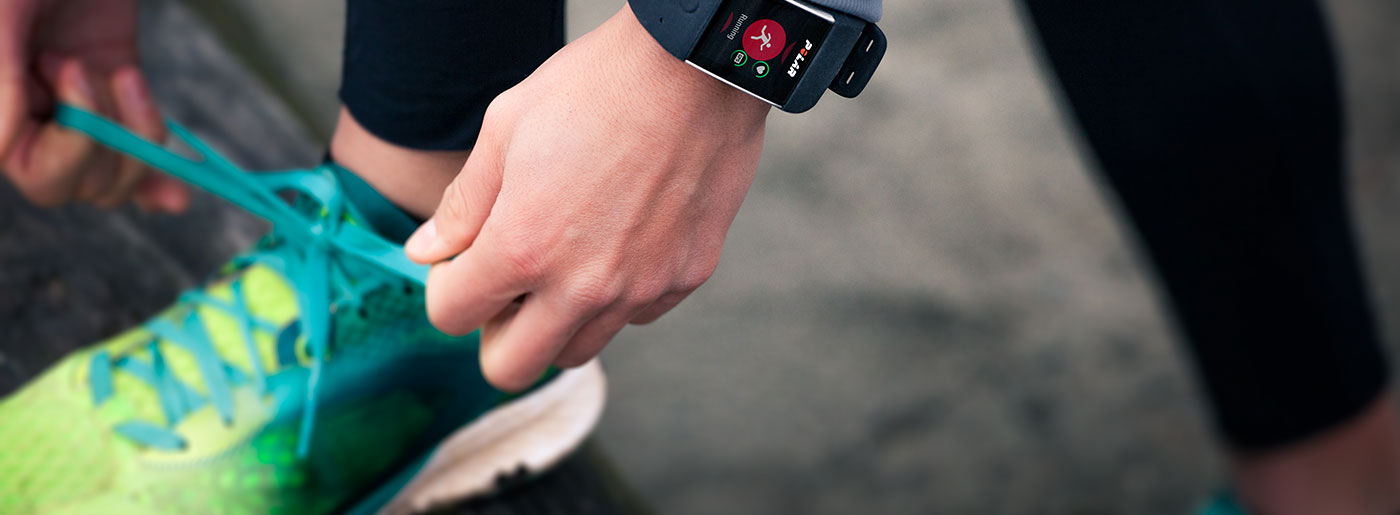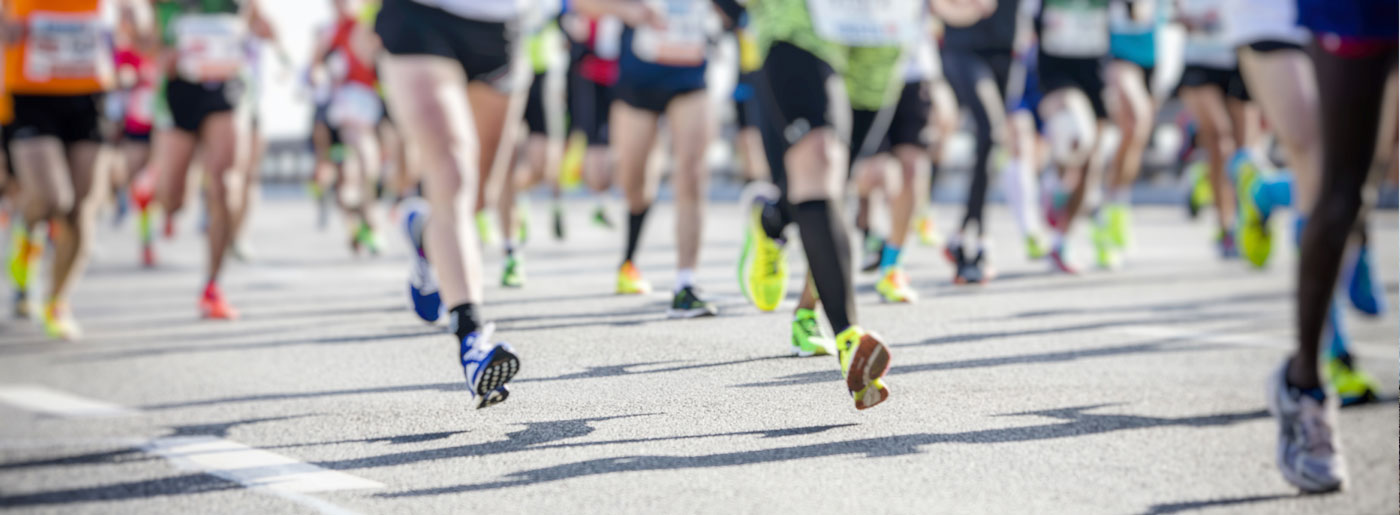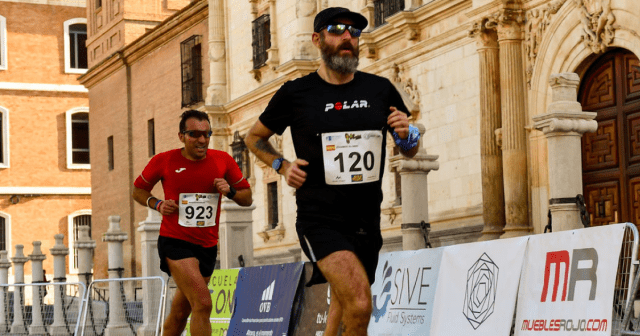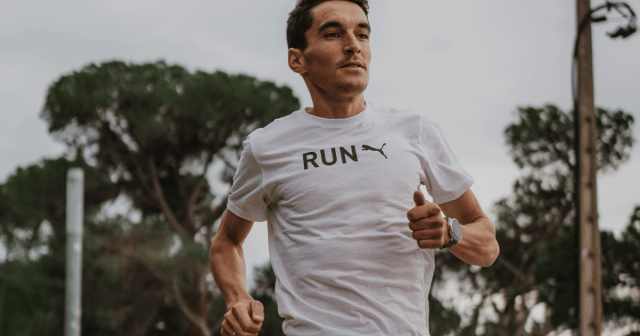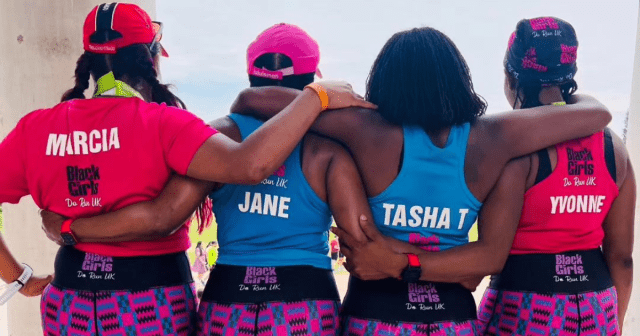You’ve been training for months and race day has finally arrived. But something feels wrong in your shoes as you head into (lucky) mile 13… Something you could have easily avoided. And still can, if you have more races ahead.
Sadly, for many marathon runners, injury is something that will happen leading up to or on race day. We don’t mean the kind of injury that will send someone to the ER, but pains and annoyances that can get in your head and make your run less enjoyable.
By far the biggest thing that can influence your chances of an injury in both training and racing are your running shoes. Luckily, you can minimize the chance of injury by choosing the right marathon running shoes.
Below, a team of sports scientists from On running has outlined what to check for with your marathon shoe before the race to avoid marathon injuries, and for the readers who are reading this article after something has already happened, a few tips and guides for dealing with the most common race injuries.
4 main reasons shoes cause MARATHON INJURIES
Broken down, there are four main reasons shoes will cause you pain (whether immediately or eventually) that you should look out for.
1. Too big
Shoes that don’t fit right can not only cause blisters on different areas of the foot, but when they’re too big, can lead to unnatural and bad running form. When the shoe doesn’t fit, you’re forced to compensate on the landing. Unsettling your natural running motion.
Many people think they can deal with big shoes through thicker socks, but, when it comes to the marathon and running for hours on end, wet, thick socks are something that can be even worse when it comes to rubbing, so not recommended for a fun time.
2. Too small
Like with shoes that are too big, having shoes that are too small leads to rubbing of the foot and creates blisters, as well as foot cramps from muscles and veins being constricted. Again, running form can be affected which will give you less chance of finishing the race and even more chance of an injury, so definitely not worth it in a long run.
If a pair of shoes do feel tight when they didn’t in the store or on a previous run, one solution can be tying the laces in different ways to alleviate the pressure. Otherwise no shoes may be better than tight shoes when it comes to the marathon.
3. Too old
Though they may be your “old faithfuls”, shoes that have clocked many miles, even when they still look great can sometimes have compromised structural integrity.
Even though running shoes may look simple, they are actually full of technical parts and construction that act in together like a machine enabling your shoe to work how it’s meant to. Think of an old shoe like a race car with three wheels: It may still be able to go, but not as well as it could.
If you’ve run more than 300 miles on your shoes, check to make sure all the parts you can see still provide support and resistance as they did when you first got them. If not, your shoes may be the source of your unexplained pains and aches post-run as the cushioning and support that was once there may no longer be intact. In that case, you may need a new pair before the race, but…
4. Too new
The warning all marathon runners hear: “Don’t run on race day in new shoes”. The reasoning behind this advice is that most running shoes, even if you’ve run in the same model before, can vary and so your foot needs some time to adjust to the new insole, padding, feel and overall performance of a new model.
You can never be 100% certain this new shoe is all you expect it to be and your foot may feel discomfort the first few times you wear it as you “break it in”. So, better to play it safe with that older pair than be sorry you went for the shiny new ones.
Just right
The perfect marathon shoe should be at least two weeks old before you wear them on race day, having already been on five or more medium to long runs in them. Most marathons are largely run on roads, so look for some cushioning in your racing flat to help save your joints as you run on the firm ground.
As a marathon is such a long distance, look for a shoe with some support as likely your running form will likely weaken as the race goes on, so extra ankle help comes in handy. We recommend the On Cloudflow as a great marathon choice for most runners. Other than that, find a shoe that feels right to you, take it for plenty of test runs, and if you do that, you shouldn’t need the next section…
How to deal with shoe-related marathon injuries on the day
All the preparation in the world, and still, it can happen.
Below, we’ve outlined how to deal with the most common marathon injuries. For many of them, having a few key items on your person can be a huge help, especially if there aren’t many aid stations along the run.
As a loose guide, when running a marathon, you should have on you: ten plastic strips (or more), healing balm (such as Vaseline), magnesium powder, and sugar of some kind (lollies, mints). You’ll be glad you had these things, if any of the following happens to you.
Blisters
The most common friend of the runner. Blisters are small pockets of fluid that can form between layers of skin that are caused by friction. They can be frustratingly painful (especially on the foot).
To deal with them, the best thing you can do during the race is to stop, dry your feet, apply some balm and plastic strip over the blister, and then retie your shoes to loosen up pressure in the area where the blister’s located.
Unfortunately, this may only be a temporary solution that you may need to do again after another 5 miles or so, as the plastic strip may get damp. If the pain continues, stop and do it all again (good thing you packed so many plastic strips with you!).
Chafing/Rubbing
Hand in hand with blisters comes chafing and rubbing thanks to prolonged periods of time with your feet in wet conditions along with something causing friction on the foot.
In extreme marathon cases, toenails have been known to come off through rubbing during the race, and runners haven’t even felt it happening.
Should chafing or rubbing happen to you and prove painful, do as with blisters: Stop, dry, treat and re-tie, which should alleviate (if only for some time) the discomfort.
Soreness
As the race goes on, things will begin to hurt. Mostly this will be because your body parts are no longer receiving as many nutrients as they are used to (see the spasms note below). When it comes to general soreness, rubbing and stretching is the best way to go on, depending on what part of your body it is.
With sore feet, taking off your shoes, rubbing and drying your feet, then re-tying shoelaces after can have them feeling fresh again (and solves many marathon day problems, as you can see). Aside from that, warming creams can help with pain, numbing the area, but usually stretching out tired and sore muscles is the best way to go.
Spasms, seizing or cramping muscles
Often this happens in the later stages of the race, with a feeling like a part of you (usually calves) suddenly has a mind of its own (aka spasm). The worry is that they will tear from the spasm, so the best thing to do is to stretch on the sideline and wait for the movement to die down.
These kinds of cramps are your body telling you your muscles need more water delivered into them, so a banana or magnesium powder can help in that regard. Massaging the area also can help with blood flow and so too can warming creams and balms. Wait a few minutes until the cramp subsides, start off again slowly and everything should be fine.
Stretched or pulled muscles, tendons and twisted ankles
Finally, the worst marathon injury we’ll cover. These are the ones that bring pain and may be accompanied by a popping/snapping sound.
Unfortunately, we can’t responsibly advise you to keep going, as running on may make things worse. When they strike, move to the side, have a marathon official get you help, and relax knowing you gave it a good go and likely this was something beyond your control.
It’s better to pull out today and be able to run again, than run on and risk doing even more damage that may have you sidelined longer.
And finally…
Though a minor injury may happen during the marathon, something that has an even greater chance of sidelining you after the race has nothing to do with shoes at all: it’s catching a cold.
Coughs and colds develop from too many runners hanging around post-race in their wet running gear (and yes, shoes), unaware of how chilly they really are.
So, our final piece of advice: Change as soon as you can into dry, warm clothes, grab something warm to drink, a warm bite to eat, then you can bask in that warm, post-marathon-finish-feeling worry and injury free.
If you liked this post, don’t forget to share so that others can find it, too.
Or give it a thumbs up!
I like this article
Please note that the information provided in the Polar Blog articles cannot replace individual advice from health professionals. Please consult your physician before starting a new fitness program.
